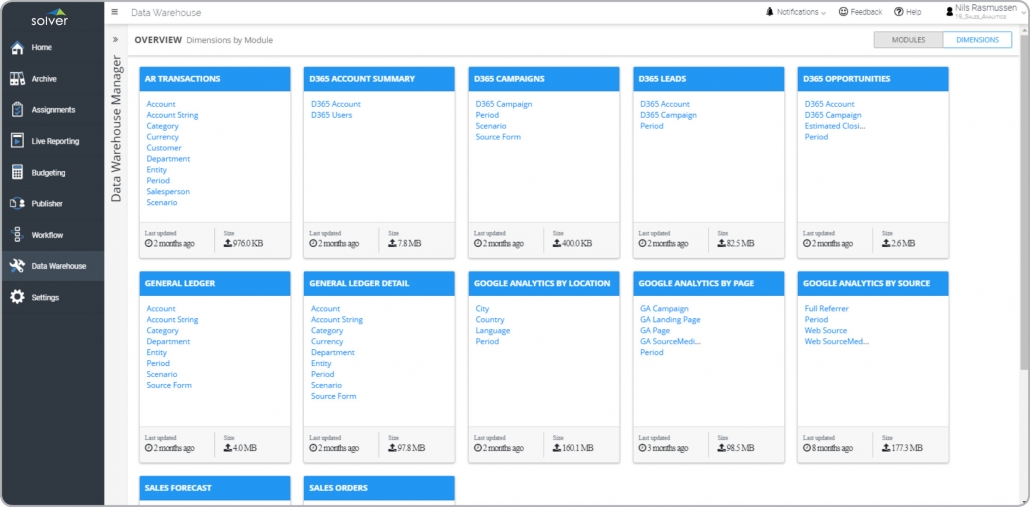Related Posts
BLOG HOME
- Better Reporting Leads to Better Business Decisions
- xFP&A Software for Financial Consolidation Drives Intelligent Decisions
- Best Practices in Creating Consolidated Financial Statements
- Solver on Solver: ASCEND Data Insights Using Our Proprietary Reporting
- Strategic KPI Report for Dynamics 365 Business Central
Top Data Warehouse Features in the Best CPM Software Apps
This article is part 5 of an 8-part series on evaluating the best CPM tools for your business. Part 5 focuses on data warehouse considerations to focus on as you are evaluating the best CPM software applications.
In the Digital Era, companies that make faster and better decisions than their counterparts are the most successful – yet accurate decisions require accurate information. Because all businesses have numerous data sources in addition to their ERP system, it takes a lot of time and effort to extract and compile information from all the internal systems. The fact that most of these systems are now based in the cloud does not make it easier. This fast decision-making requirement has led an increasing number of companies to now implement a cloud data warehouse in order to streamline data collection, reporting, and analysis. Some of these data warehouse platforms are included with Corporate Performance Management (CPM) solutions. Because CPM solutions already use databases to store financial data and budgets, these vendors sometimes offer an expandable CPM that can also serve as a data warehouse. More about this later. However, implementing a
corporate data warehouse can be risky and expensive without proper technology selection and planning. And, of course, the
return on investment (ROI) needs to be positive. When working through a software selection process to find the best data warehouse platform for your organization, there are some features that are more important than others.
Here are some of the top features to look for in a data warehouse app While most vendors can probably showcase more than 100 features in their product — something which can make software selection a virtual nightmare — there is a clear 80/20 rule that can be applied to zoom in on critical success factors. Here is a list of five major functionality areas to consider:

- Data warehouse platform
- Homegrown versus commercial data warehouse

- Separate data warehouse or combined with CPM solution?
- Data extraction, transformation, and loading (ETL)
- Modules, dimensions, and trees
- Number of users
- Number of data source connectors
- Number of transactions stored in the database
- Amount of data processing
- Does the annual subscription from each vendor contain the same user count and modules?
- If you are receiving a discount, how long until it resets to the list price?
- Does the vendor provide a written policy for annual price increases?
- Are the implementation estimates from each vendor for exactly the same work?
- Major data loads and processing could slow down the ERP system and make daily work difficult for accountants.
- Licensing requirements for the ERP may become more costly than expected.
- Some ERP APIs may not be suitable for flexible and fast data import and export.
- ERP databases are generally not built to easily handle lots of detail from other data sources such as CRM data, helpdesk information, or other solutions.
- ERP systems typically don’t offer best-of-breed reporting, budgeting, and dashboards so chances are that you will end up exporting data out of the ERP “data warehouse” and into CPM and BI systems anyway.
- Vendor Comparison Tool and ROI Calculator
- Solver Tour Central
- 500+ Budget and Report Examples
- Analyst reports and ratings: G2 and Dresner
- Software Selection Blog
- QuickStart - 1 day data warehouse deployment with pre-built report- and dashboard templates
TAGS: Reporting, Consolidation, Data warehouse
Global Headquarters
Solver, Inc.
Phone: +1 (310) 691-5300
